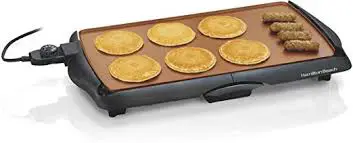Common Mistakes to Avoid When making Pancakes
If you want to know about the common mistakes you should avoid when making pancakes, you should go through this post carefully. For, here, in this post I have discussed what are things you should not do when making pancakes at home.
 Truly, there is nothing better than spending the weekend with a delicious and soothing breakfast. More precisely, a breakfast with pancakes! There is a whole lot to choose from a wide variety of delicious pancakes! You can make the thick and soft buttermilk pancakes. Or else, you can choose the light and tender ricotta pancakes. You may also like to make a luxurious Dutch baby pancake for your children. so, the choice is endless! Just do not forget to add the syrup.
Truly, there is nothing better than spending the weekend with a delicious and soothing breakfast. More precisely, a breakfast with pancakes! There is a whole lot to choose from a wide variety of delicious pancakes! You can make the thick and soft buttermilk pancakes. Or else, you can choose the light and tender ricotta pancakes. You may also like to make a luxurious Dutch baby pancake for your children. so, the choice is endless! Just do not forget to add the syrup.But the key to making good pancakes on the griddle is technique. Here are some tips on how to do things right and avoid some common mistakes people are likely to make.
1. Over-mixing the batter
Do you have the urge to keep stirring the batter until the lumps disappear and it is completely smooth? Avoid it completely.
If you mix dry and moist ingredients together, gluten will start to develop. And the more you mix the dough, the more gluten develops. What happens then? The result of a overworked batter is a bunch of hard and soft pancakes instead of the light and soft pancakes you’ve probably been dreaming about.
You can follow this tip: Only mix the batter until the wet and dry ingredients mix together and no more flour flakes are visible. The batter can be lumpy, and this is normal.
2. Allow some time for the better to rest
You are so close to making a delicious pancake breakfast that it seems like an excruciating pain to wait a little longer. It is a small but crucial step that should not be skipped. It does not matter if you are hungry. Take your time and don’t hurry through things.
The resting period, which can vary between five and thirty minutes depending on the recipe you are going to prepare, plays a dual role. The gluten, which was activated during the kneading, rests and relaxes. In addition, the starch molecules in the flour absorb the liquid from the batter. This eventually gives it a thicker consistency.
You can follow this advice: Good things come to those who stand and wait! And, yes, this saying also applies to pancakes. It may look like a trifling thing, but letting the batter rest is an important step. It gives the gluten a chance to relax and settle down. In other words, it makes the pancakes softer and softer. And this is especially important for Dutch pancakes and baby pancakes. Use this time to clean, set the table or simply get the things ready you might need while serving.
3. Do not start with a insufficiently hot pan
In my opinion, a good pancake is characterized by tender, buttery-crispy edges and a soft, tender interior. You may start with a pan that is not hot enough. But instead of forming a slightly crispy outside, the dough will start to absorb the butter or oil from the pan and become greasy.
Follow this tip: Give your pan time to heat up properly. Before the batter is added to the pan, the butter or oil should be very hot but not steamy. If you are not sure whether the pan is hot enough, don’t be afraid to make a small test with the pancake first to see if everything is alright.
4. Set the heat on a higher level but keep an eye on it
If the heat is too high, the pancakes will not cook faster, but will cook unevenly with the outside of the pancake burnt. The pan should be hot, but don’t make the mistake of setting the temperature too high. For, the bottom may burn while the inside remains raw and soft.
Follow this tip: Setting the oven to the right temperature is one of the keys to making a good pancake. The pan should be hot, but that doesn’t mean you have to turn up the heat. For making a well-cooked pancake with a golden brown outside and a soft inside properly cooked, the heat should be kept at medium level.
5. Turning pancakes too early and too often
You may be tempted to flip them over as soon as the bubbles start appearing, but this is not the right time. Wait one more minute.
Pancakes should be turned once, and only once during cooking. And as long as you don’t turn them too soon, you won’t need to turn them again. If pancakes are turned too often, they will let the air out of them and lose some of their wonderful soft texture.
Follow this advice: wait until the pancakes are turned when the bubbles burst on the surface, and don’t do this a second earlier.
Wrapping up
So, these are the 5 common mistakes you should avoid when making pancakes.Hopefully, the advice given here will benefit you a lot while go about doing pancakes for your family. Making pancakes is not a difficult job, but if you are careful, you will end up with a mess. Hence, you should take all precautions before you make pancakes at home. the Write button and compose something new.
